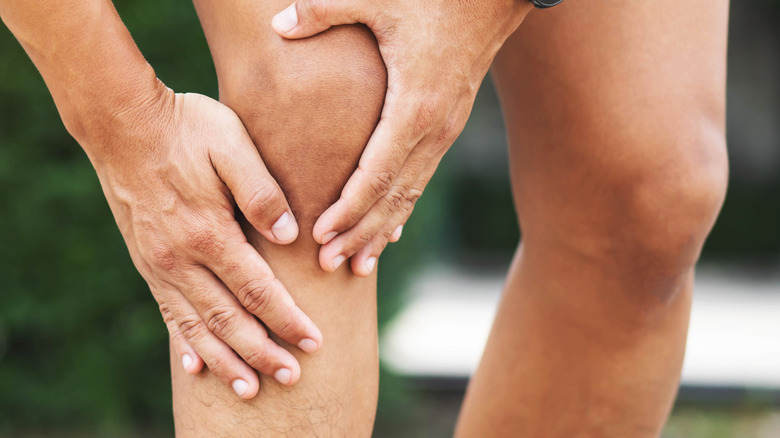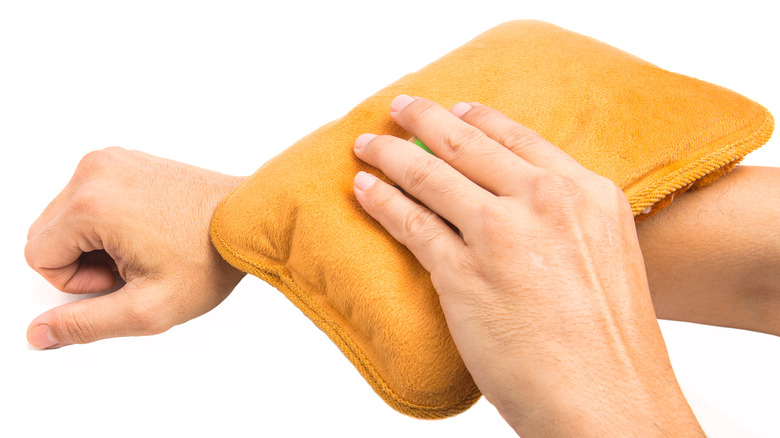The First Thing You Should Do If You Strain A Muscle
Muscle strains can occur from a number of activities, such as lifting an object improperly, muscle overuse, or picking up a heavy object. When a muscle is strained, the fibers and tendons on the muscle are torn, either partly or fully. During this process, small blood vessels are damaged, causing you to experience symptoms of a muscle strain, like pain when resting, or bruising.
Straining a muscle can happen to anyone, but many are unaware of the crucial steps that should be taken if it occurs. After a strain, you may feel pain, bruising, swelling, redness, or weakness. Should you experience this, you'll want to rest and treat the muscle strain with ice as soon as possible. However, it's important you don't put ice directly onto the affected area.
Instead, you'll want to wrap the ice in a towel or another type of protective covering. While ice wrapped in a covering will aid in inflammation for a muscle strain, putting ice directly onto your skin can cause ice burns or other damage to the skin.
It's best to use ice covered in a towel first for muscle strain treatment — once the swelling goes down, you can switch to heat. You'll want to repeat the ice step for a few days after the initial injury. During those first few days, you can ice the affected area for 20 minutes every 2-3 hours while you're awake.
Heat for muscle strain treatment
Many people use heat after straining a muscle, which is recommended, but timing is everything. Putting heat on your muscle strain immediately after the injury occurs can increase the amount of pain and swelling. When you're able to use heat, you should always use a protective covering, as you would with ice. Heat is an effective remedy for muscle strains because it reduces swelling by increasing your blood flow, but it will do the opposite if used too soon.
If you have trouble remembering whether to apply heat or ice after a muscle strain, remember the "R.I.C.E" approach. Rest, ice, compression, and elevation make up the R.I.C.E. method. You'll want to rest the injury by avoiding activities that cause you any more pain and swelling, but be sure to remain physically active. While you rest, apply ice, compress the area with an elastic bandage, and elevate your injury above your heart. Compression and elevation both aid in reducing swelling.
The R.I.C.E method is best used for mild strains and may speed up your recovery time. In addition to ice and heat, you can use over-the-counter pain medications. Check with your doctor first, as it could interfere with other medications you take.


